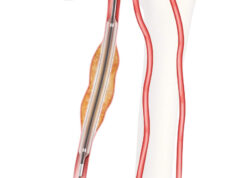LAS VEGAS—Efforts at international collaboration across borders can drive harmony among disparate regulatory requirements and lead to greater global cooperation at the medical device level, a senior member of the Food and Drug Administration (FDA) told the opening session of the 2019 Vascular Interventional Advances (VIVA) conference (Nov. 4-7).
Global groups like the International Medical Device Regulators Forum (IMDRF) exemplify the kind of work regulators across the globe are undertaking to spark unity, explained Misti Malone, assistant director of the FDA’s peripheral interventional devices team. “This is a voluntary effort among medical device regulators to harmonize various regulatory requirements across their jurisdictions,” she said.
The FDA considers the IMDRF as part of its “strategic priority” to put in place the foundations to create a Medical Device Single Review Program, Malone reported, with the eventual goal that some authorizations be adopted across national boundaries once granted in a single market.
Malone’s presentation focused on updates concerning the regulatory landscape and various recent changes.
“I hope you do not consider the FDA the most challenging and controversial aspect in clinical care,” she began, adding, “We are here to interact and be collaborative with you, and we appreciate the hard work that you are doing.”
Regulatory pathways are evolving across the world, Malone continued. She drew attention to the FDA 510k pathway–required for most Class II, medium-risk devices, including guidewires, introducers, balloon catheters, and peripheral atherectomy instruments. This pathway requires demonstration of “substantial equivalence” to a legally-marketed predicate device, meaning that the device design, performance, and intended use must be similar to a Class II device that is currently on the market, she said.
On Sept. 20, the FDA released a new guidance regarding an alternative 510k process called the Safety and Performance-based Pathway (SPP). While this is based on the predicate device equivalence benchmark that underlies the current pathway, there must also be performance testing that involves FDA-specified methods and criteria that may be based on recognised standards and historical performance of comparable devices rather than side-by-side testing with a specific marketed devices.
Malone said “it is not our goal to reduce innovation [but] to help support it by allowing the process to move as efficiently as possible” in what is a complex and evolving cardiovascular device technology marketplace.
“One of the goals of this new pathway is that it will be more similar to regulatory paradigms in other countries,” she added.
Malone referenced third-party certification in Japan that relies on performance criteria set by Japanese government but includes few cardiovascular devices. “This may be a pathway that will be valuable for some of our simpler devices in which we can set these performance criteria,” she said.
Malone also reported on continued discussion around the adoption of the Medical Devices Regulation (MDR) in the European Union (EU) that is likely to take effect in May 2020. She said one goal of this update is to reinforce provisions for clinical evidence so that evaluation will be required premarket for some devices, continuing in the post-market with regular updates, surveillance and analyses. “The EU hopes that this will provide more information to support clinical decision-making and patient decision-making.”
According to Malone, devices that are most likely to require clinical investigation under the MDR are those that are implants and high-risk devices, devices that may be Class II or lower where the technology has little or no experience, or a device for which the intended purpose is being extended or if there is a new indication for use. For Class III and implantable devices, she detailed that a post-market clinical follow-up report “may be required.”
At the close of her presentation, Malone urged delegates: “Please consider global strategies when appropriate.”












